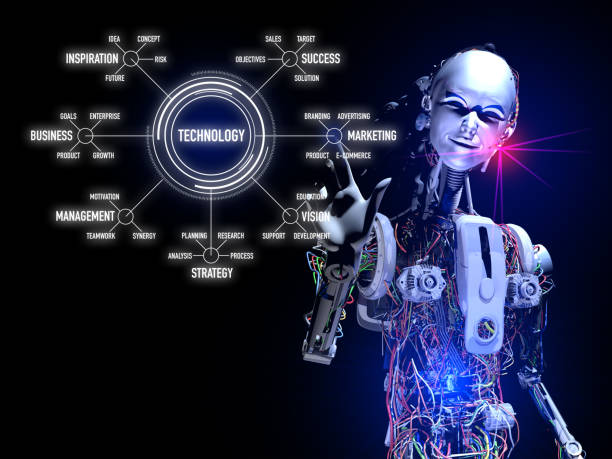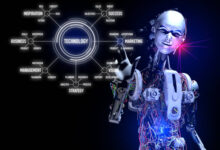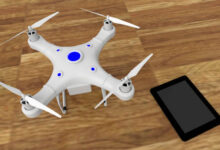How To Build AI-Driven Marketing Automation Systems

Marketing automation is the process of using software to automate marketing tasks. This can include tasks such as sending emails, creating social media posts, and managing lead generation campaigns.
AI-driven marketing automation systems use artificial intelligence (AI) to automate marketing tasks in a more intelligent and efficient way.
For example, AI can be used to personalize marketing messages, identify leads with the highest potential, and automate the process of nurturing leads into customers.
Benefits of using AI-driven marketing automation systems

There are a number of benefits to using AI-driven marketing automation systems, including:
- Increased efficiency: AI-driven marketing automation systems can help you to automate repetitive tasks, freeing up your time to focus on more strategic initiatives.
- Improved results: AI-driven marketing automation systems can help you to improve your marketing results by personalizing marketing messages, identifying the right leads, and automating the lead nurturing process.
- Reduced costs: AI-driven marketing automation systems can help you to reduce your marketing costs by automating tasks and improving your marketing results.
How to build an AI-driven marketing automation system
To build an AI-driven marketing automation system, you will need to:
- Choose a marketing automation platform: There are a number of marketing automation platforms available, both commercial and open source. Choose a platform that meets your needs and budget.
- Identify the tasks you want to automate: Once you have chosen a marketing automation platform, you need to identify the tasks that you want to automate. This could include tasks such as sending emails, creating social media posts, and managing lead generation campaigns.
- Configure your marketing automation platform: Once you have identified the tasks that you want to automate, you need to configure your marketing automation platform to automate those tasks. This will involve creating workflows and triggers.
- Integrate your marketing automation platform with your other systems: You may need to integrate your marketing automation platform with your other systems, such as your CRM system and your email marketing system. This will allow you to automate tasks across your entire marketing stack.
- Monitor and improve your marketing automation system: Once your marketing automation system is up and running, you need to monitor its performance and make adjustments as needed. This will help you to ensure that your marketing automation system is delivering the results that you need.
Here are some tips for building an AI-driven marketing automation system:
- Start small: Don’t try to automate everything at once. Start by automating a few key tasks and then gradually add more tasks as you gain experience.
- Use a data-driven approach: When configuring your marketing automation system, be sure to use a data-driven approach. This means using data to identify the tasks that are most important to automate and the best way to automate those tasks.
- Test and measure: Once you have implemented your marketing automation system, be sure to test and measure its performance. This will help you to identify areas where you can improve your system.
Examples of AI-driven marketing automation systems
Here are a few examples of AI-driven marketing automation systems:
- HubSpot Marketing Hub: HubSpot Marketing Hub is a commercial marketing automation platform that uses AI to automate a variety of marketing tasks, such as personalizing marketing messages, identifying leads with the highest potential, and automating the lead nurturing process.
- Pardot: Pardot is a commercial marketing automation platform that uses AI to automate a variety of marketing tasks, such as creating personalized email campaigns, scoring leads, and automating lead nurturing workflows.
- Marketo Engage: Marketo Engage is a commercial marketing automation platform that uses AI to automate a variety of marketing tasks, such as personalizing marketing content, identifying the best leads, and automating the lead nurturing process.
FAQs on How to Build AI-Driven Marketing Automation Systems
What are some of the challenges of building an AI-driven marketing automation system?
Some of the challenges of building an AI-driven marketing automation system include:
- Cost: AI-driven marketing automation systems can be expensive to implement and maintain.
- Complexity: AI-driven marketing automation systems can be complex to set up and manage.
- Data quality: AI-driven marketing automation systems require high-quality data to perform effectively.
How can i Choose the right marketing automation platform
Not all marketing automation platforms are created equal. Choose a platform that is designed to support your specific marketing goals and needs.
Here are some factors to consider when choosing a marketing automation platform:
- Features: What features are important to you? Make a list of the features that you need and compare different platforms to see which ones offer those features.
- Pricing: Marketing automation platforms can range in price from a few hundred dollars per month to thousands of dollars per month. Choose a platform that fits your budget.
- Ease of use: Some marketing automation platforms are more user-friendly than others. Choose a platform that is easy to use and navigate.
- Support: Make sure that the marketing automation platform you choose offers good customer support. This is important in case you have any questions or problems with the platform.
How can I get started with building an AI-driven marketing automation system?
To get started with building an AI-driven marketing automation system, you can follow these steps:
- Assess your current marketing operations: Identify the tasks that you are currently automating and the areas where you think AI could help you to automate more tasks.
- Choose a marketing automation platform: There are a number of marketing automation platforms available, both commercial and open source. Choose a platform that meets your needs and budget.
- Identify the tasks you want to automate: Once you have chosen a marketing automation platform, you need to identify the tasks that you want to automate. This could include tasks such as sending emails, creating social media posts, and managing lead generation campaigns.
- Configure your marketing automation platform: Once you have identified the tasks that you want to automate, you need to configure your marketing automation platform to automate those tasks. This will involve creating workflows and triggers.
- Integrate your marketing automation platform with your other systems: You may need to integrate your marketing automation platform with your other systems, such as your CRM system and your email marketing system. This will allow you to automate tasks across your entire marketing stack.
- Monitor and improve your marketing automation system: Once your marketing automation system is up and running, you need to monitor its performance and make adjustments as needed. This will help you to ensure that your marketing automation system is delivering the results that you need.
Conclusion
AI-driven marketing automation systems can help you to improve your marketing efficiency, results, and ROI. By following the tips above, you can build an AI-driven marketing automation system that meets your specific needs and goals.
Additional tips:
- Start small: Don’t try to automate everything at once. Start by automating a few key tasks and then gradually add more tasks as you gain experience.
- Use a data-driven approach: When configuring your marketing automation system, be sure to use a data-driven approach. This means using data to identify the tasks that are most important to automate and the best way to automate those tasks.
- Test and measure: Once you have implemented your marketing automation system, be sure to test and measure its performance. This will help you to identify areas where you can improve your system.
Building an AI-driven marketing automation system can be a challenge, but it is a worthwhile investment. By following the tips above, you can build a system that will help you to improve your marketing results and grow your business.








